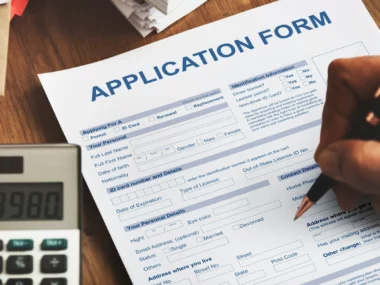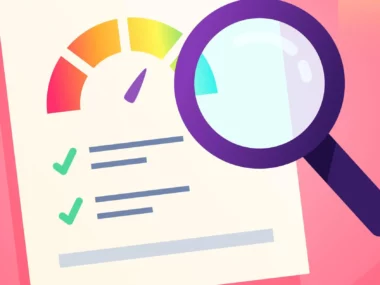Table of Contents
Back in 2021, President Joe Biden prevented a first-ever US default when he approved a measure to raise the country’s debt ceiling by $2.5 trillion.
The debt ceiling refers to the highest amount of money that the government is legally allowed to borrow.
The debt limit was raised then to avoid some dreadful financial consequences that could have impacted the US economy.
Fast forward to 2023, as a default crisis was looming again, President Joe Biden approved the Biden-McCarthy debt ceiling bill to avert it.
Both the Senate and the House of Representatives supported the bill, and the president also spoke about the pertinence of passing this bill, pointing out how high the stakes were.
Although the main aim of the bill was to raise the debt limit, there are also discussions about amending public programs such as medical care for veterans and food assistance for low-income households.
It doesn’t stop there, the bill will also lift the suspension on federal student loan repayments that started during the COVID-19 pandemic. This will prevent further extension on the pause that was placed on the repayment of these loans, and borrowers will be mandated to initiate repayment 60 days after June 30.
According to the Federal Reserve, over 43 million Americans owe a sum total of $1.73 trillion in student loan debt.
What is the consequence of the Debt Ceiling Bill for Student Loans?
The bill prevents the US Department of Education from pausing loan repayments again.
According to the contents of the bill, loan repayments will begin by August 30, and this would officially lift the suspension that was placed on student loan repayment by President Trump early on in the COVID-19 pandemic.
Will There Be a Need To Pay Interest On Student Loans?
By August 30, loan repayment will begin and interest will start to accumulate on these loans again. There won’t be any changes to interest rate and the time that you’re expected to make your first payment will be determined by your loan servicer.
As a borrower, can I suspend my repayments by myself?
If you are eligible for deferment or forbearance, you can absolutely suspend your payments until a later date. This might not stop interests from accumulating on the loan though.
Will there be any student loan forgiveness?
The bill doesn’t include any plan to forgive student loans. However, President Biden has a student loan forgiveness program which plans to grant 43 million qualified borrowers up to $20,000 in debt relief. If the Supreme Court approves it at the end of June, eligible borrowers will have either a portion or all of their student loans forgiven, depending on how much their owe.
What if the court doesn’t approve Biden’s debt relief plan?
If this happens, there are plans to revise income-driven repayment (IDR) programs to help middle and lower-income borrowers. Alternatively, the Education Department can also provide debt relief individually.
How do I prepare for the loan repayments?
As the student loan repayment period draws near, one of the ways to get yourself ready is by striving to settle any debt that you have at the moment by either working to pay them off or consolidating them.
Another way is to invest any amount that you may have set aside for the loan repayment in a high-yield saving account. This will help to grow the money between now and August 30 when you will be required to begin repayment.
What is the Debt Ceiling?
The debt ceiling is the maximum amount of money that the US government is allowed to borrow to settle its bills.
Also referred to as the debt limit, the debt ceiling was created under the Second Liberty Bond Act of 1917.
Although the government generates a lot of internal revenue, it isn’t usually enough to cover its expenses, which is why there is a need to borrow.
Once the country’s national debt has reached the limit set, the government will be obligated to find other ways to get money to pay for its expenses, until the limit is raised again.
To avoid defaulting on its debt, the US has raised its debt limit many times over the years.
Upsides of the Debt Ceiling
1. It serves as a source of finance for federal activities.
2. It helps to keep the country’s finances in check.
3. It helps to avoid defaulting.
4. It preserves the value of the country’s currency.
5. It helps to avoid recession
Downsides of the debt ceiling
1. Since the debt ceiling can be easily raised, it might promote financial recklessness.
2. It is sometimes politicized.
3. It adds to the country’s debt.
Difference between raising and suspending the debt ceiling?
When a country raises its debt ceiling, it means that it has set a new borrowing limit, i.e. it has increased the amount of money that it can borrow. On the other hand, when a country suspends its debt ceiling, it means that there is temporarily no limit to how much it can borrow.
How would default affect the US economy?
The government keeps striving to avoid defaulting on its debt so it can prevent certain adverse effects that it will have on the country’s economy. Here are some of those effects:
1. The government would cease to issue paychecks for all US troops .
2. Millions of jobs would be lost.
3. The country’s track record of never defaulting on its debt would be stained.
4. The country’s GDP would slump.
5. Millions of people wouldn’t get Social Security or Medicare benefits.
Bottom line:
Now that you are aware of the implication of the new debt ceiling bill on student loans, ensure to put your finances in order, so you can comply with repayment, come August 30.





